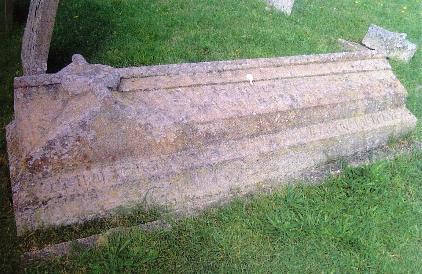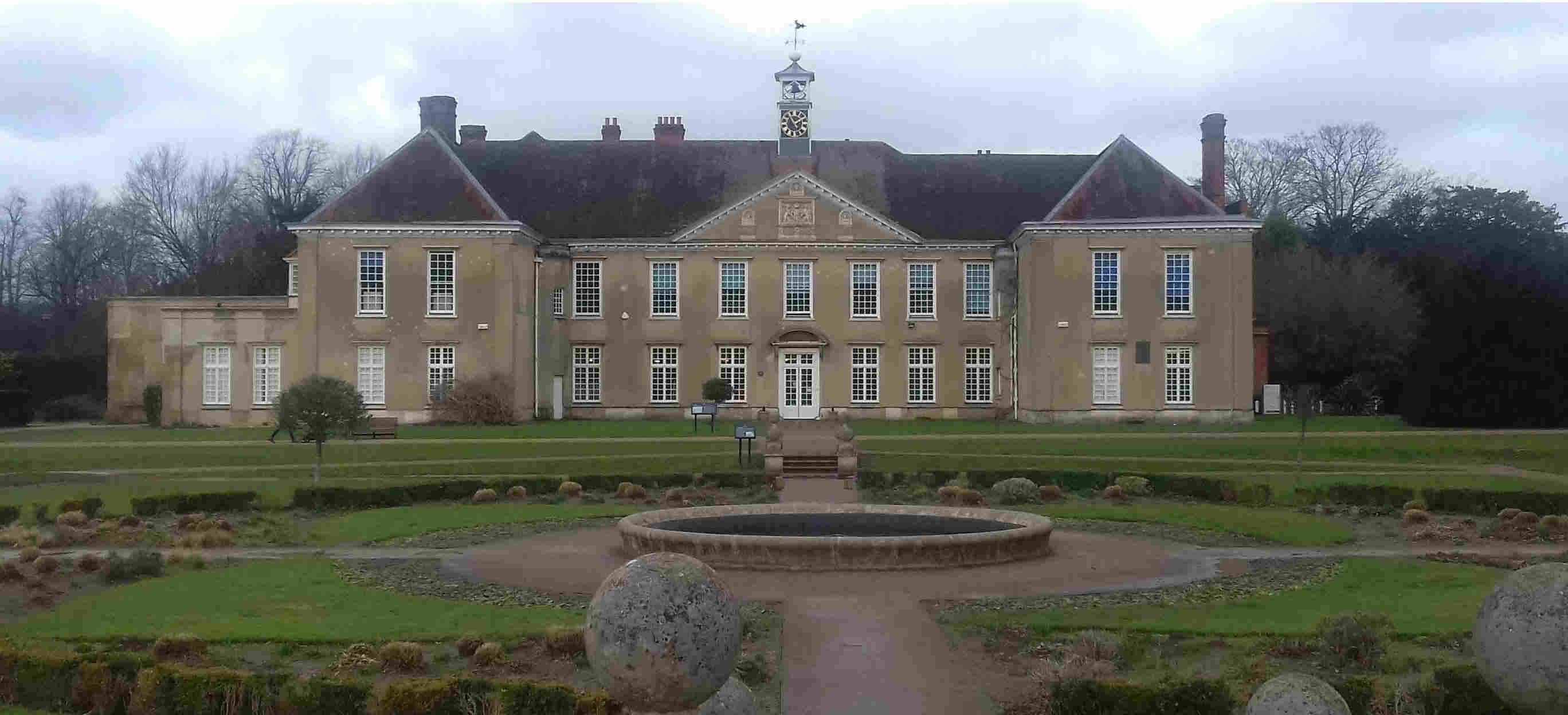The Linnell's
As has
happened on a number of previous occasions, an email to
this site has prompted a new page to be added. This time
the contact was from Tim Linnell, a descendant of John
Linnell, the artist who lived at Redstone Wood, Redhill,
for many years in the second half of the 19th century.
Contact details for Tim and his own source for much more
information appear at the foot of this page.
The
following is a brief article on some aspects of John
Linnell's work and family that had resided on my computer
since I put it together some years ago. I'm pleased that
I have been reminded of it and finally make use of it
here.
THE EARLY YEARS
John Linnell was born on 16th June,1792, and brought up
in an atmosphere of paints and paintings, for his father,
a carver and gilder, sold such things in a shop in
Bloomsbury. The business was not always as profitable as
it might have been but John began painting at an early
age and producing works which not only showed promise but
which were also marketable and aided the family income.
. . . . .The young Linnell
first received instruction from Benjamin West, and later
from a miniature painter named Robertson. His work was
admired by John Varley, an Academy exhibitor and teacher
of painting, who also encouraged the young Linnell. Aged
12 John went to Varley's school of painting as a
resident. His father still sold his pictures while John's
skills advanced to the point where he became a student of
the Royal Academy and, at 14, had two small landscapes in
oils exhibited there. The following year he exhibited a
picture at the British Institution which was sold on the
first day. That same year he was awarded the
Institution's prize of 50 guineas for the best landscape,
'Removing Timber', and won a silver medal at the Royal
Academy for a drawing.
It was In this same
year - he was still only 16 or 17 - that he painted one
of his most famous pictures, 'Quoit Playing' or 'The
Quoit Players', and sold it for 75 guineas to Sir Thomas
Baring. Thirty-seven years later, in 1848, it was sold at
Christies for 230 guineas. A few years later it was sold
to Mr G.Simpson of Reigate for 1000 guineas.
RELIGION
When he was 18 John Linnell entered the Baptist Church,
being baptised by immersion. His strong religious beliefs
stayed with him for life, although he latter quitted the
Baptists and joined the Plymouth brethren, and he had a
strong aversion to anything to do with the Church of
England or Roman Catholicism, and especially to priests.
He married Mary Palmer in 1817, when he was 25, and the
pair made a three day journey to Scotland so that they
could be married before a registrar and avoid a Marriage
by a priest. Years later his eldest daughter, Hannah,
married Samuel Palmer, the celebrated artist, and John
insisted they were also married by a registrar. John
Linnell thought every day should be the same so did not
recognise birthdays or anniversaries of any kind nor
treat the Sabbath as any different from any other day.
Because he wanted real and unadulterated truth of the
scriptures he learned with his sons the Greek of the New
Testament so he could construe and translate for himself.
He also learnt to some extent to do the same with the
Hebrew of the Old Testament. 
Samuel Palmer/Hannah Palmer's grave at Reigate
Cemetery (photo courtesy Geoffrey Wright)
WORK
John Linnell specialised in portrait painting for many
years. People of importance wanted their likenesses
captured in oils, if not in standard sized framed
canvasses then on ivory miniatures or lockets and
bracelets. It is supposed he followed this line because
it paid well, portraits being popular in an age before
photography. He also painted landscapes, which also sold
well. He had a style which encompassed colouring,
interest of subject, and effects in sky and cloud that
made his works outstanding when compared with those of
his contemporaries. He showed regularly at all the best
London exhibitions and had about 170 pictures hung at the
Royal Academy. His relationship with this body must have
been marred by his not being elected to membership when
he applied in 1821, for he never again allowed his name
to be put down, although his eligibility must have become
unquestioned. He said that men who could not sell their
paintings without letters would benefit but he could
sell, and did not need them.
. . . . .Linnell ceased
portraiture and engraving in 1847, and from then on
painted historical and poetical landscapes and figure
subjects.
REDHILL
By the time he was 55 he was a wealthy man and could
afford a house in the country. By chance he came to
Redhill. He had time on his hands waiting to change
trains there and spent it on a walk up Redstone Hill. It
was May, 1849, and he was with his son, James. They had
been on their way to Edenbridge to look for a site there,
but so taken were they with the views in all directions
plus the unspoilt quality of the area - eleven acres of
which were up for sale by the owner, Mr John Allsop of
the Stock Exchange - that John Linnell decided to buy.
There is a story that Linnell chose the estate in part
because of the glorious red sunsets caused by the
Fuller's earth of Redstone in the atmosphere.
He set about
designing and building a large Reigate stone house
straight away, moving his family into rooms in Redhill
while he did so. By 1862 he had added sixty-three more
acres to his original eleven, the final thirty-two being
the Chart Lodge estate (Chart Lodge itself, a freehold
property, was a part of this purchase). By the time he
had finished his house, 'Redstone' was a fine mansion
with terraced grounds and magnificent views all around.
As with religion,
Linnell felt strongly about receiving certain sustenance
in anything but the most unadulterated form, and at
Redstone had installed machinery for grinding, making and
baking bread. He also had equipment for home brewing. He
built a second house for his son, James. This was called
Redstone Wood South, later Redstone Copse, and stood
where the Redstone cemetery entrance is now situated. It
was pulled down around 1965. He built another house at
the top of Redstone Hill for another son, William, a
house called Hillsbrow that was to become Hillsbrow
School. Another son, Thomas, lived at Earlswood, possibly
at Margaret Villa, St John's Road.
MARRIAGE
John Linnell's first wife, Mary, died in 1863, when he
was 71 and she 49. On 18th September, 1866, he was
married to Mary Ann Budden by Mr Hart, the Reigate
registrar. Mary Ann, who was 49 at the time of the
marriage, had lived at 61 Ladbroke Road with her brother,
Samuel, who was manager of the marine Department of the
Commercial Union Insurance Company. John died, aged 90,
in January, 1882 and Mary Ann died nine years later. All
three are buried together in Reigate churchyard where
close by, are the graves of his sons, William and John.
WILLIAM LINNELL
William, the third son of John Linnell, is said to have
been named after the painter William Blake. He became a
prolific and talented painter in his own right and
exhibited at the Royal Academy and at other art
exhibitions. He probably worked and lived more in London
and abroad than at Redhill, although he did have an art
school in Redhill where he taught many people to draw and
paint. The essayist E.V.Lucas wrote in Scattered
(Loiterer's) Harvest in 1913 about 'the testy, old white
bearded gentleman with a constitutional antipathy to
cats'. For many years one of his paintings - 'Aurora in
Romagna, peasants from the mountains on their way to
Rome', hung over the door to the courtroom at Reigate
Town Hall, but after a deprecating remark about it in a
council debate it was removed and disappeared. It had
been a gift to the council by William's daughter, Mrs
Riches.
TODAY
The Linnell family left their mark on Redhill in no
uncertain way, although John Linnell's mansion was
demolished in the 1940s and the estate he built up split
into small parts again. One building on the estate still
exists, being the lovely Redstone Cottage
off Philanthropic Road. Also one of the houses backing
onto the wood contains the remains of Linnell's orchard.
Other than these there is little left to see of his
passing locally except for literature about him in the
library, busts of himself and his son, John, in Reigate
library, and various paintings that might be available to
see on display locally or in major centres of art.
Linnell Road is a small road close to Philanthropic and
Hawthorn Roads, near to where he once lived.
Linnell and his family painted many
pictures of the Redstone estate, and I have a couple of
them. One particular field was very often painted, and
you'll find a nice reproduction of one example, 'Noonday
Rest', at the Tate Gallery website.
With thanks and best wishes,
Tim Linnell
I was unfortunately unable to furnish any of the
information Tim is looking for but if any visitor to this
site can do so please contact Tim via the contact email
he gives above. AJM
|

